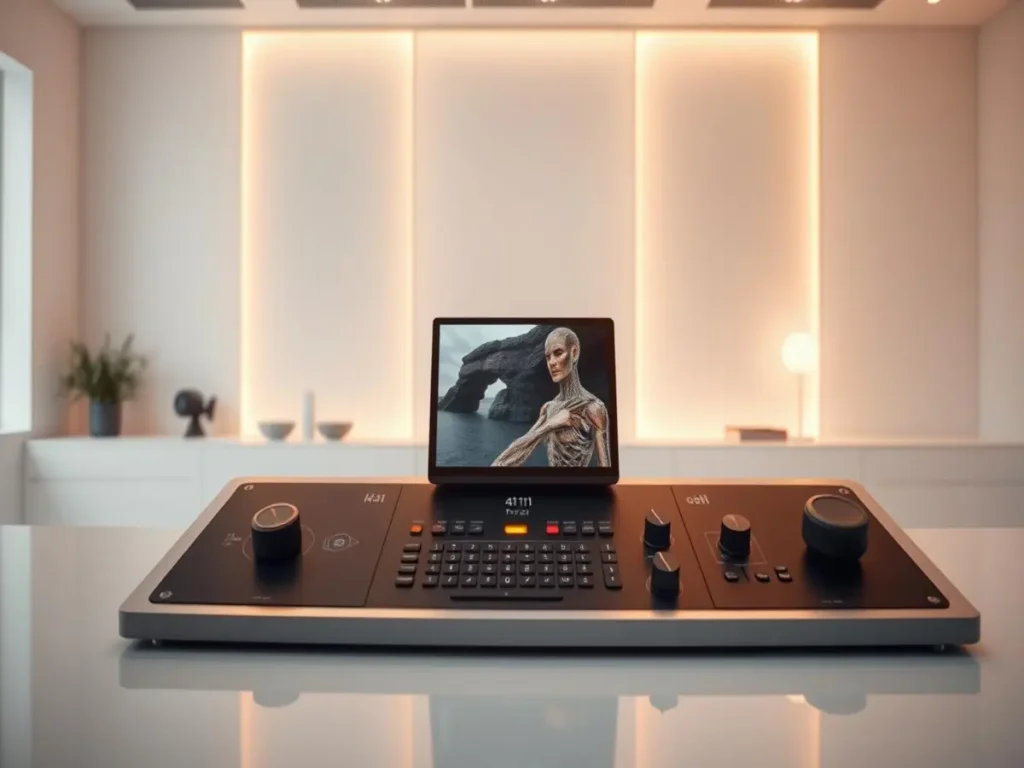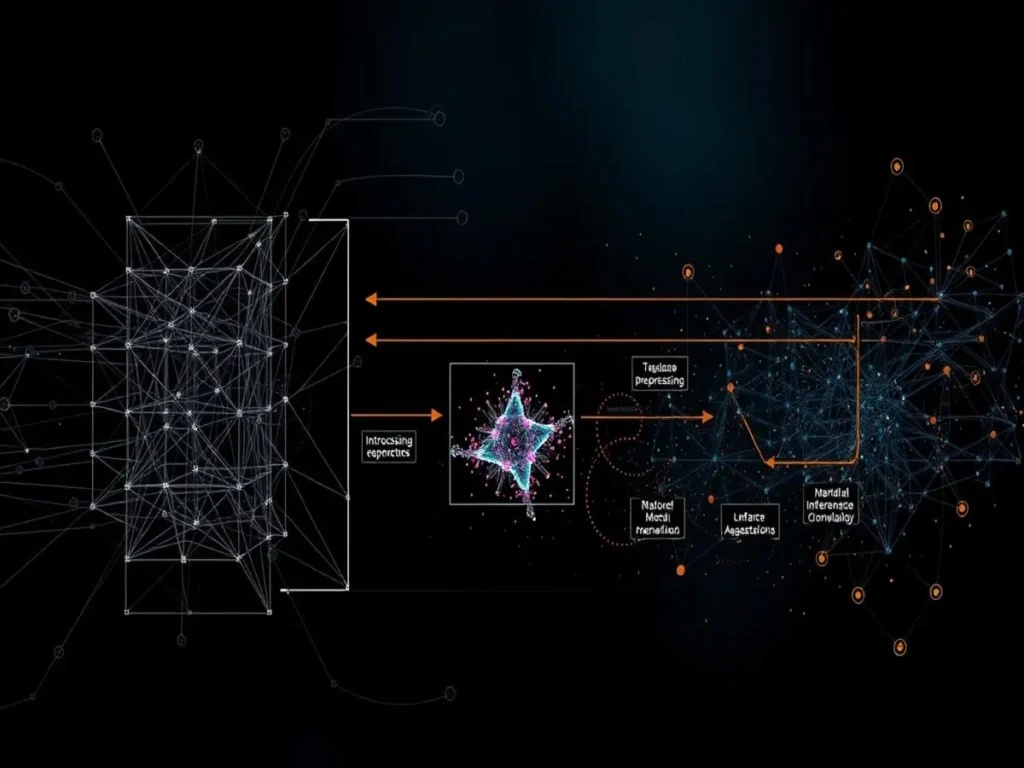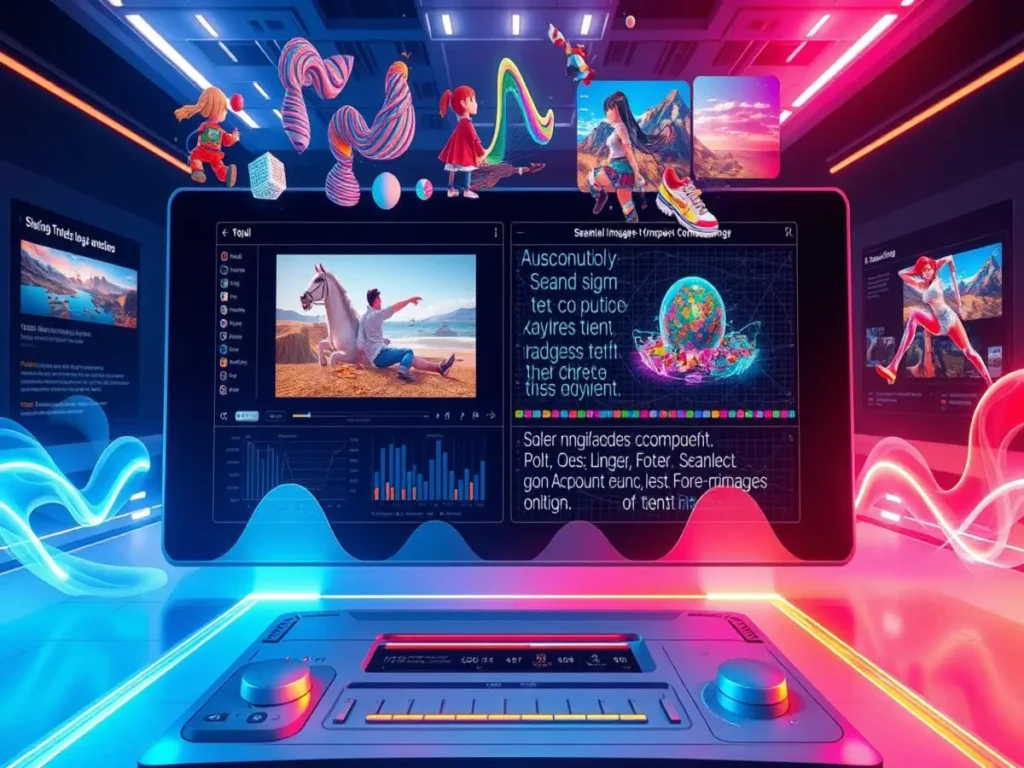Every day, OpenAI’s image generators handle over 5 million requests. They turn words into visuals faster than traditional design methods. This shows a big change in how we tell stories with pictures.
The openai image generator, along with DALL-E and newer models, makes images from text in seconds. For marketers, bloggers, and designers, this tool could change how we work. This article looks into if these tools are the best in AI creativity or if their flaws are too big.

Key Takeaways
- OpenAI’s image generators handle over 5 million daily requests, reshaping visual content at scale.
- Tools like DALL-E 3 use advanced algorithms to interpret text prompts with unprecedented accuracy.
- Content creators save hours by automating design tasks through the OpenAI image generator.
- Quality varies based on prompt clarity and model limitations, requiring human oversight.
- Ethical questions about image authenticity and copyright arise with the widespread use of AI image creators.
Understanding the OpenAI Image Generator Revolution
OpenAI has changed how we tell stories with images. Their image synthesis tool uses algorithms to turn text into real-looking pictures. This is a big step forward in how tech and art meet.
What Makes DALL-E and Other OpenAI Models Unique
These models are great at understanding complex prompts. They can create detailed images from simple phrases. For example, they can make a cityscape with neon lights look like it’s from another era.
They can switch between styles easily, from very real to very abstract. Their training on huge datasets makes them very good at creating content.
The Evolution of AI Image Synthesis Technology
- Early systems (2010s): GANs struggled with coherence but pioneered pixel-based outputs
- 2018–2020: First text-to-image models emerged, though outputs were often fragmented
- 2021: DALL-E 2 introduced transformer architecture, enabling context-rich visuals
- 2023–present: High-resolution outputs with improved detail and style control
How Deep Learning Powers Modern Image Creation
The deep learning image generator is at the core of these systems. Neural networks take in text, break it down, and turn it into images. Here’s how it works:
– Text encoding: Turns words into numbers.
– Image generation: Uses these numbers to create pixel images.
– Iterative refinement: Keeps improving the image based on feedback.
This process makes OpenAI’s tools faster and more accurate than old design software. It makes high-quality visuals available to everyone.
How the OpenAI Image Generator Works: Behind the Technology
OpenAI’s image generator uses advanced image-generation techniques. It’s based on machine learning image generation. The system has neural networks trained on huge datasets of text and images.
These networks learn how words relate to images. They can turn prompts into pictures.
Key steps include:
- Training: Algorithms study millions of images and captions to find visual-text links.
- Prompt Analysis: The system breaks down user input into keywords and context clues.
- Image Synthesis: Neural networks use learned patterns to create new visuals that match the prompt.

Generative adversarial networks (GANs) are also involved. They have two neural networks that compete to improve outputs. This process gets better over time.
Now, it can handle abstract ideas like “a sunset over a cyberpunk city.” It blends style and content well.
| Technology | Role |
|---|---|
| Neural networks | Learn visual-text relationships |
| GANs | Refine image realism and detail |
| Training datasets | Provide foundational knowledge for image creation |
Recent updates have made the generator faster and more precise. It can now produce sharper, more accurate images than before.
Top Features That Set OpenAI’s Image Creation Tools Apart
OpenAI’s image tools are unique because of their artificial intelligence image maker tech. They offer innovative image creation solutions for professionals. These tools make work easier while keeping quality high.

Text-to-Image Capabilities
Users just type in what they want to see, and the tool creates it. OpenAI’s models get the details right, making sure the image matches what you had in mind. For instance, asking for a “futuristic cityscape with neon lights” gets you a detailed, accurate picture.
Style Transfer and Artistic Control
Artists and designers get to play with advanced style transfer options. They can mix photorealism with abstract patterns or even copy famous artworks. The tool keeps the style consistent, even when you change the image size or details.
Resolution and Image Quality
The images can be as high as 1024×1024 pixels, which is perfect for any use. Recent updates have made the images even clearer, with less blur when zoomed in. You can also make old images look new again without losing any sharpness.
Editing and Iteration Functions
Making changes is easy with real-time prompt tweaks. You can adjust text inputs or apply filters to existing images. OpenAI’s interface lets you edit layer by layer, giving you control over colors, composition, and textures.
Practical Applications for Content Creators and Marketers
Content creators and marketers are now using the OpenAI Image Generator to change how they work. They make visuals faster and cheaper than before. This tool helps fill gaps in making visual content in many fields.
Social Media Visual Content Generation
Automated image generation makes social media planning easier. Big brands like Nike and Coca-Cola use the OpenAI Image Generator for daily posts. They follow these strategies:
- Use prompts like “modern abstract background + product” for consistency
- Test 3-5 visual variations per campaign
- Automate seasonal content updates
Blog and Website Illustration
Publishers like Forbes and Medium add AI visuals to their articles. They get these benefits:
- Custom infographics for data-driven content
- On-demand illustrations for evergreen posts
- Brand-aligned imagery without outsourcing
E-commerce Product Visualization
Retailers make product mockups in real time with the tool. They use these tactics:
- 360-degree virtual product shots
- Style-transfer for seasonal campaigns
- Dynamic inventory visual updates
Advertising Campaign Creation
Advertising teams make concepts 3x faster with AI tools. They follow these best practices:
- Generate 10+ ad variations for A/B testing
- Consistent brand aesthetic across platforms
- Rapid iteration of campaign visuals
| Application | Use Case | Outcome |
|---|---|---|
| Social Media | Weekly post calendars | 50% faster content creation |
| E-commerce | 3D product mockups | 40% cost reduction |
| Advertising | A/B test visuals | 20% higher engagement rates |
Comparing OpenAI Image Generator with Alternative AI Tools
Content creators now have many AI image creator options. OpenAI’s tools compete with Midjourney, Stable Diffusion, and Adobe Firefly. This comparison shows their strengths and weaknesses.
| Feature | OpenAI | Midjourney | Stable Diffusion | Adobe Firefly |
|---|---|---|---|---|
| Image Quality | High realism | Distinctive artistic styles | Varied outputs | Professional polish |
| Cost | API pay-as-you-go | Subscription model | Free open-source | Adobe Creative Cloud tier |
| Customization | Advanced text prompts | Style-specific prompts | Full code access | Integration with Adobe tools |
Midjourney is great for surreal looks. Stable Diffusion lets developers customize. Adobe Firefly is perfect for those already using Adobe tools.
OpenAI’s deep learning image generator is easy to use and produces high-quality images. API-based systems like OpenAI are good for big users. Midjourney is best for artists who love to experiment.
When choosing, think about what you need and your budget. This will help you pick the right tool for your project.
Limitations and Ethical Considerations of Automated Image Generation
Tools like OpenAI’s DALL-E bring new creativity to the table. But they also raise big questions. Creators face legal, social, and environmental hurdles when using these technologies.
Copyright and Ownership Challenges
Who owns AI-generated images is still up for debate. The laws are unclear on whether these images are original or based on training data. Artists whose work is used in these systems often don’t get paid, leading to lawsuits.
Courts around the world are trying to figure out the rights in innovative image creation scenarios.
Bias and Representation Flaws
- Training data can include biases, leading to unfair outputs (like gender stereotypes in portraits).
- OpenAI has added filters to block harmful content and made training data more diverse.
Energy Consumption Concerns
AI models use a lot of energy. Training one model can release as much carbon as 100 flights. OpenAI is working to make advanced image generation more energy-efficient.
It’s important to consider both the benefits and drawbacks of AI tools. Users should think carefully before adding them to their work.
Conclusion: Is OpenAI’s Image Generator Right for Your Creative Needs?
Choosing the right artificial intelligence image maker depends on your goals and what you need. OpenAI’s tools are great for quick ideas and high-quality images. They use machine learning image generation to help with prototyping or social media.
These tools are good for many tasks, but they have limits. For unique projects or specific branding, you might need to tweak things yourself. Also, think about copyright and bias issues.
For everyday tasks like social media pictures or blog illustrations, OpenAI’s tools are efficient. But for detailed or original work, combining AI with human touch is best. The future of machine learning image generation looks promising, but today’s tools are already helpful for creatives.
Deciding to use OpenAI’s tools depends on how they fit into your workflow and what you want to create. They can help speed up ideas or explore new artistic paths. As technology gets better, keeping up with updates will help you use these tools wisely and keep your vision in control.


I very delighted to find this internet site on bing, just what I was searching for as well saved to fav
This is really interesting, You’re a very skilled blogger. I’ve joined your feed and look forward to seeking more of your magnificent post. Also, I’ve shared your site in my social networks!
Good post! We will be linking to this particularly great post on our site. Keep up the great writing
Very well presented. Every quote was awesome and thanks for sharing the content. Keep sharing and keep motivating others.
I am truly thankful to the owner of this web site who has shared this fantastic piece of writing at at this place.